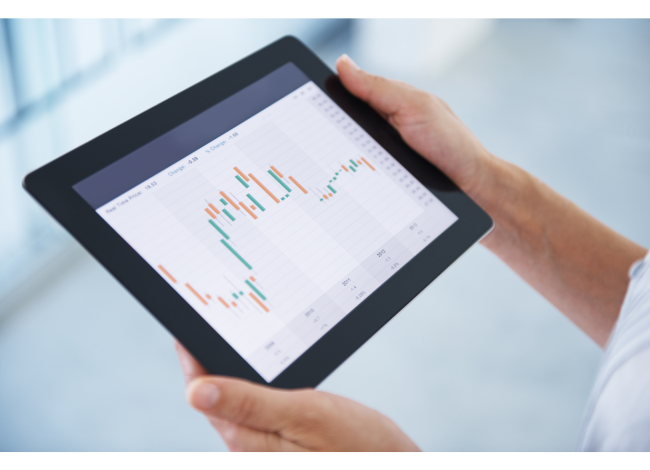At the beginning of this year, you would have struggled to find a single investment bank or asset manager (ourselves included) that thought owning 10-year US Treasuries (USTs) was a good idea.
As we wrote in January, inflation was at that time making a mockery of central banks’ ‘transitory’ rhetoric and we thought government bond yields were set to scream higher, making 10-year USTs deeply unpopular among the people whose job it is to tell investors where to put their money.
That all changed on April 7 when Barclays strategists published a note entitled ‘Go long 10y US Treasuries’, and a handful of others have since followed suit; the world’s favourite safe haven asset looks to suddenly be back in fashion, and that is because for some, recession is now looking more likely and less far away than it did a few weeks ago.
In our view it is time for investors to think about gradually preparing their portfolios for this risk.
In short, we think building a position in 10-year USTs is now a serious consideration for bondholders, as is gradually increasing credit quality and focusing on shorter dated bonds in the coming months in order to try to get maximum benefit from the higher yields on offer in fixed income today.
Inflation will outstay its welcome
If the probability of recession is rising, it is because the Fed’s chances of engineering a soft landing for the US economy look to be shrinking with every month that inflation remains well above target.
In our January piece we highlighted that we thought central banks were clearly behind the curve as 2021 came to a close, but inflationary forces have proved to be even stronger than they were when the Fed performed its hawkish ‘pivot’ back in December.
US consumer price inflation (CPI) climbed again to a mammoth 8.5% in March, but the bigger problem is that this was the 12th consecutive monthly reading above 4%.
Consumers – the driving force of every developed economy – are being squeezed from every conceivable angle, from a recent surge in the price of palm oil to ongoing supply chain disruption from Covid-19 and Russia’s invasion of Ukraine, not to mention a huge spike in energy prices.
10-year government bond yields YTD

Into a late-cycle
Our view is less pessimistic; we would put the chances of a US recession in 2023 at less than 50%, based mainly on the evident strength of the economy coming into 2022, which has so far provided an adequate buffer to the shocks listed above.
However, while views like Deutsche Bank’s are becoming more prevalent in the media (which tends to favour dramatic headlines), we are yet to see a looming recession show up in hard economic data.
Consumer confidence has taken a hit of late, but gross retail sales have held firm and the Q1 earnings season has shown US and European corporates have been navigating these obstacles from a position of strength, with profit margins growing and a healthy percentage of firms beating estimates.
That said, we feel that the rate hikes currently expected, added to the tough 12 months consumers have already endured, will begin to impact business investment before too long.
The economy will be firmly in late-cycle territory by the end of this year, by which point the strong GDP growth buffer we had in 2021 will likely have been eroded.
We think that will leave the economy (and the markets) more vulnerable to a further shock that could tip us from late-cycle into recession.
Time to start building a late-cycle portfolio
So how can we build a portfolio for recession?
Firstly it is very important to note that, as the previous cycle neatly demonstrated, late-cycle conditions can last a very long time indeed, during which time risk assets can still rally and get very expensive relative to long-term averages.
Making your portfolio too defensive too quickly can be very detrimental in such circumstances.
In our view, the best approach is to stay very liquid so that we can respond quickly to try to take advantage of any further intra-cycle dips, while building in enough protection against a potential recessionary sell-off.
Therefore we think a rough balance of 15% in rates and 85% in relatively short dated credit is about right for today’s environment.
Let’s start with government bonds, or ‘rates’ in bond market parlance.
If like everybody else you were avoiding longer dated USTs completely coming into 2022, then we think that view is now worth revisiting.
The inflation-induced rates sell-off has seen 10-year UST yields rise from 1.51% on January 1 to 2.95% as of May 5.
At almost 3%, we think a lot of bad news (and a good number of rate hikes) is already priced into this yield, and it can be a valuable risk-off position for a portfolio in the event of any worse-than-expected economic data.
Inflation (CPI)

Fixed income has struggled in general so far this year, with the volatility in government bonds and geopolitical tensions leading to an aggressive widening in credit spreads.
However, as the chart above shows, this does mean valuations in some sectors have dipped to levels not far off what we might expect to see in a recessionary environment, so we are shopping in a much cheaper looking bond market than we were in January.
In our experience those elevated yields can be a big help when navigating periods of volatility like the one we currently find ourselves in, since they give us confidence that we can still generate reasonable returns even if conditions worsen.
Ultimately, while we think recession (if it arrives) is many months away yet, in fixed income it is never too early to start preparing your portfolio for the risk.
Mark Holman is a founding partner of TwentyFour Asset Management.

